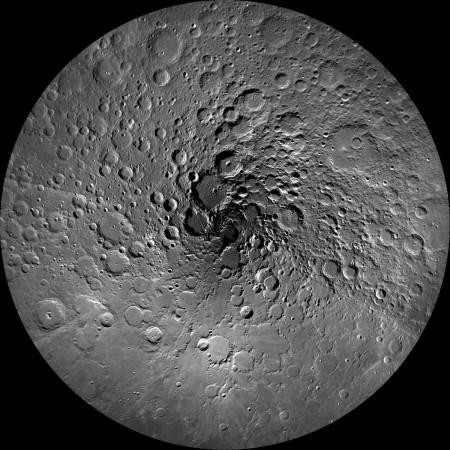
A new study suggests that astronauts may be able to access water hidden under the moon's surface. NASA scientists have discovered small pits near the lunar north pole and believe it could provide passageways to a huge underground network of lava tubes that could even provide shelter to astronauts and lead them to the water supply.
Also Read: Scientists believe massive ice sheets on Mars could create oxygen for humans
The SETI Institute and the Mars Institute made the announcement about the new discovery after analysing data NASA's Lunar Reconnaissance Orbiter (LRO). According to SETI, these pits could help astronauts find underground water on the moon. These pits are "sky-lit" entrances to a network leading to huge underground caves formed millions of years ago.
The news pits were identified on the Philolaus Crater, which is close to the lunar North Pole. These pits appear as "small rimless depressions, typically 50 to 100 feet across (15 to 30 meters), with completely shadowed interiors."
"The highest resolution images available for Philolaus Crater do not allow the pits to be identified as lava tube skylights with 100 percent certainty, but we are looking at good candidates considering simultaneously their size, shape, lighting conditions and geologic setting" said Dr Pascal Lee, planetary scientist at the SETI Institute and the Mars Institute.
The pits are located along lunar sinuous rilles, which are believed to be lava tubes that were once underground tunnels filled with streams of flowing lava.
Earlier, researchers had discovered 200 pits on the moon with several identified as skylights, but the recent discovery is the first published report of possible lava tube skylights near the lunar north pole.
"Our next step should be further exploration, to verify whether these pits are truly lava tube skylights and if they are, whether the lava tubes actually contain ice. This is an exciting possibility that a new generation of caving astronauts or robotic spelunkers could help address," Dr Lee said.
"Exploring lava tubes on the Moon will also prepare us for the exploration of lava tubes on Mars. There, we will face the prospect of expanding our search for life into the deeper underground of Mars where we might find environments that are warmer, wetter, and more sheltered than at the surface."
"This discovery is exciting and timely as we prepare to return to the Moon with humans" Bill Diamond, president and CEO of the SETI Institute, said in a statement. "It also reminds us that our exploration of planetary worlds is not limited to their surface, and must extend into their mysterious interiors."

















